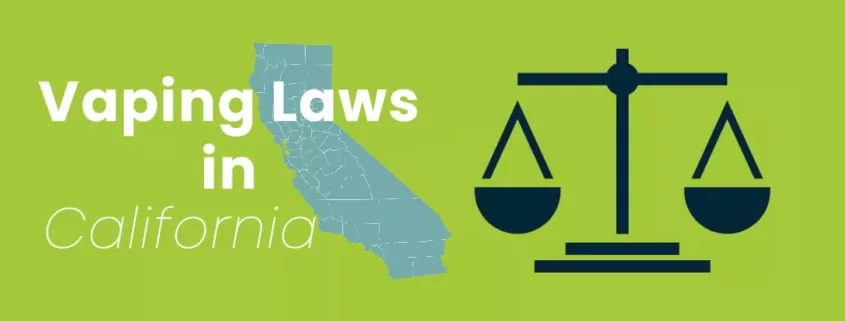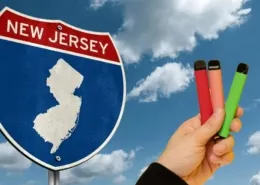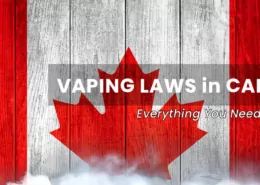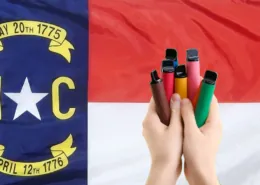Vaping Laws in California – Is it Legal to Vape in California?
Updated May / 2025
With approximately 5.2% of adults (1.4 million people) reporting current e-cigarette use and concerning rates among youth (7.8% of high school and 3.5% of middle school students), the Golden State California has responded with some of the most stringent vaping regulations in the United States. These laws aim to protect public health, curb youth access, and manage the burgeoning market for e-cigarettes, vape pens, e-liquids, and other nicotine delivery systems. This guide provides an in-depth look at California’s evolving vaping landscape as of May 15, 2025.
Key Highlights of California’s Vaping Regulations
- Minimum Purchase Age is 21: The legal age to purchase any tobacco product, including all vaping supplies, is 21. An exception exists for active-duty military personnel, who can purchase these products at age 18 or older with valid ID.
- Comprehensive Flavor Ban (Effective Jan 1, 2025): A sweeping ban prohibits the sale (both retail and online) of nearly all flavored tobacco and vaping products, including menthol. Only unflavored or artificial tobacco-flavored vape products appearing on a state-approved list are permitted.
- Strict Online Sales Regulations: Alongside the flavor ban, online sales of flavored vaping products to California residents are prohibited. All permitted online sales require robust age verification and adult signature on delivery.
- Extensive Public Use Restrictions: Vaping is prohibited in most indoor public places, workplaces, within specified distances of public buildings, on school grounds, and in state parks and beaches, mirroring traditional smoking laws.
- Mandatory Retailer Licensing: Retailers must obtain a state license to sell tobacco products, including e-cigarettes, and comply with local ordinances, which can be even stricter.
- Significant Taxation: Nicotine-containing vaping products are subject to high excise taxes.
- Proposed Disposable Vape Ban: Legislation has been proposed to ban the sale of all disposable e-cigarette devices, potentially starting January 1, 2026.
- Enhanced Labeling & Eco-Friendly Measures: Stricter labeling requirements for ingredients and health risks are in effect, alongside initiatives for more environmentally friendly disposal of vape products.
Legal Framework of California’s Vape Law
California law broadly defines “electronic cigarettes” to include any device delivering nicotine in aerosolized form, as well as components and nicotine-containing liquids. These products are explicitly classified as “tobacco products,” subjecting them to similar regulations as traditional combustible tobacco, alongside federal oversight from the Food and Drug Administration (FDA).
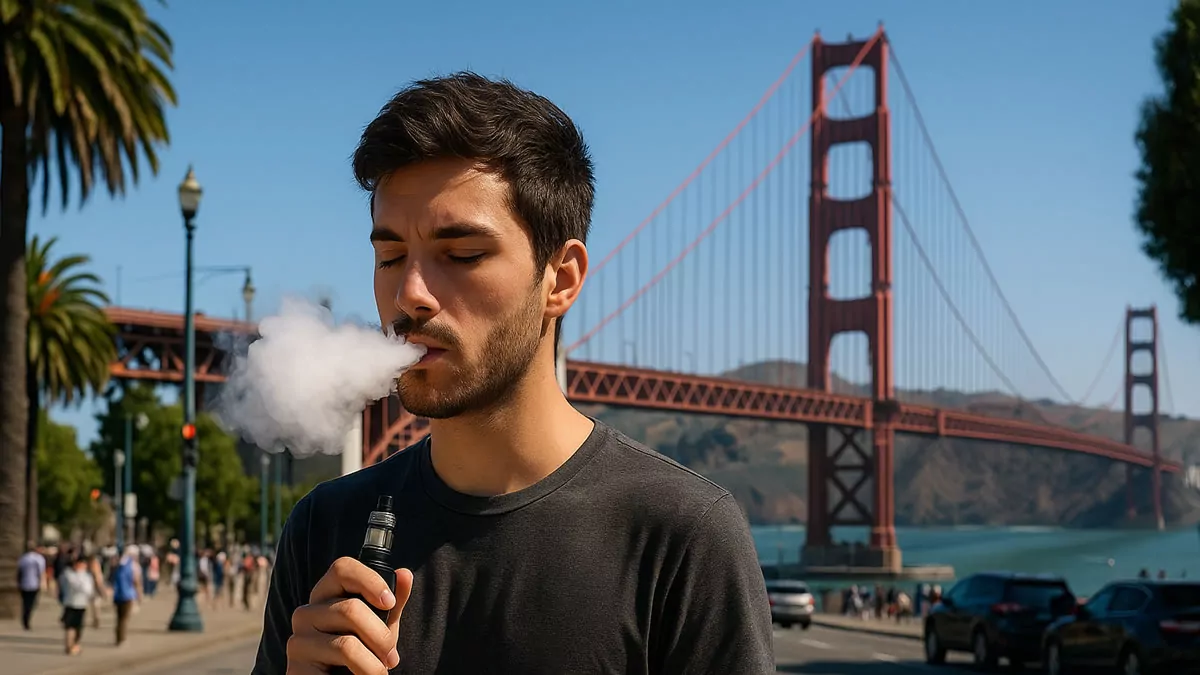
Can I Vape in California? – Key Regulations to Know
Strict Age Restrictions: The Tobacco 21 Law
A cornerstone of California’s strategy is the minimum legal age of 21 to purchase any tobacco product, including all e-cigarettes and vaping supplies. This law, which raised the age from 18 in 2016, aligns with federal Tobacco 21 legislation.
- Verification is Mandatory: Retailers, both online and in-person, are legally obligated to verify the age of purchasers using government-issued photo identification.
- Military Exception Phased Out: While an earlier exception allowed active-duty military personnel aged 18 or older to purchase these products, recent updates and interpretations of state law suggest this exemption is no longer broadly applied or has been superseded by stricter local ordinances and the overarching goal of the Tobacco 21 framework. As of 2025, the 21-year age limit is the prevailing standard.
The Sweeping Ban on Flavored Vaping Products
Perhaps the most impactful regulation is California’s comprehensive ban on the sale of most flavored tobacco and vaping products. This has been a multi-stage process:
- Initial Retail Ban (SB 793 & Proposition 31): Senate Bill 793, enacted and subsequently upheld by voters through Proposition 31 in November 2022 (effective December 21, 2022), banned the retail sale of most flavored tobacco products. This included menthol cigarettes and most flavored e-liquids, pods, and cartridges. Exemptions were made for certain products like premium cigars, some hookah tobacco, and loose-leaf pipe tobacco.
- Comprehensive Flavor Ban Expansion (AB 3218 & SB 1230 – Effective January 1, 2025): This landmark legislation significantly strengthened and expanded existing restrictions.
- Online Sales Prohibited: Critically, these laws explicitly ban the online sale and delivery of nearly all flavored tobacco and vaping products (including flavored nicotine pouches) to California residents. This closes a significant loophole. Private imports of flavored nicotine vaping products are also banned.
- Nicotine Analogs Covered: The ban extends to products containing nicotine analogs or synthetic nicotine compounds (like 6-methyl nicotine or Metatine) if they contribute to a characterizing flavor.
- “Unflavored Tobacco List”: The California Attorney General is mandated to create and maintain a list of “unflavored” tobacco products. Any product not on this list is presumed to be flavored and thus illegal for sale. Effectively, this limits legal flavored vape options to artificial tobacco flavors. Manufacturers must submit legally binding declarations that their products are unflavored.
- Broad Definition of “Characterizing Flavor”: This includes non-menthol cooling agents if they impart a taste or aroma other than tobacco.
For adult vapers, this means that access to flavored vaping products through legal retail or online channels in California is extremely limited as of 2025.
Sales, Licensing, and Distribution Controls
California imposes strict rules on how and where vaping products can be sold:
- Retailer Licensing: All retailers selling tobacco products, including vaping devices and e-liquids, must obtain a California Tobacco Retailer’s License (TRL) from the California Department of Tax and Fee Administration (CDTFA). This license requires annual renewal and must be prominently displayed.
- No Self-Service: Self-service displays of vaping products are prohibited. All such items must be kept behind the counter and handled by store employees.
- Online Sales Regulations (for permitted products): For the limited unflavored products that can be sold online, sellers must implement:
- Robust third-party age verification systems.
- Adult signature upon delivery.
- Payment via a credit/debit card in the purchaser’s name.
- Local Jurisdictional Power: Many cities and counties have enacted their own, often stricter, local ordinances. These can range from additional restrictions on sales to complete bans on the sale of all e-cigarette products. Notable examples with very strict local laws include:
- San Francisco: Implemented a complete ban on the sale of e-cigarettes in 2019 and prohibits shipping vapes to city addresses.Beverly Hills & Manhattan Beach: Have near-total prohibitions on tobacco and vape sales.Los Angeles & San Diego: Have their own additional retailer licensing and public use restrictions.
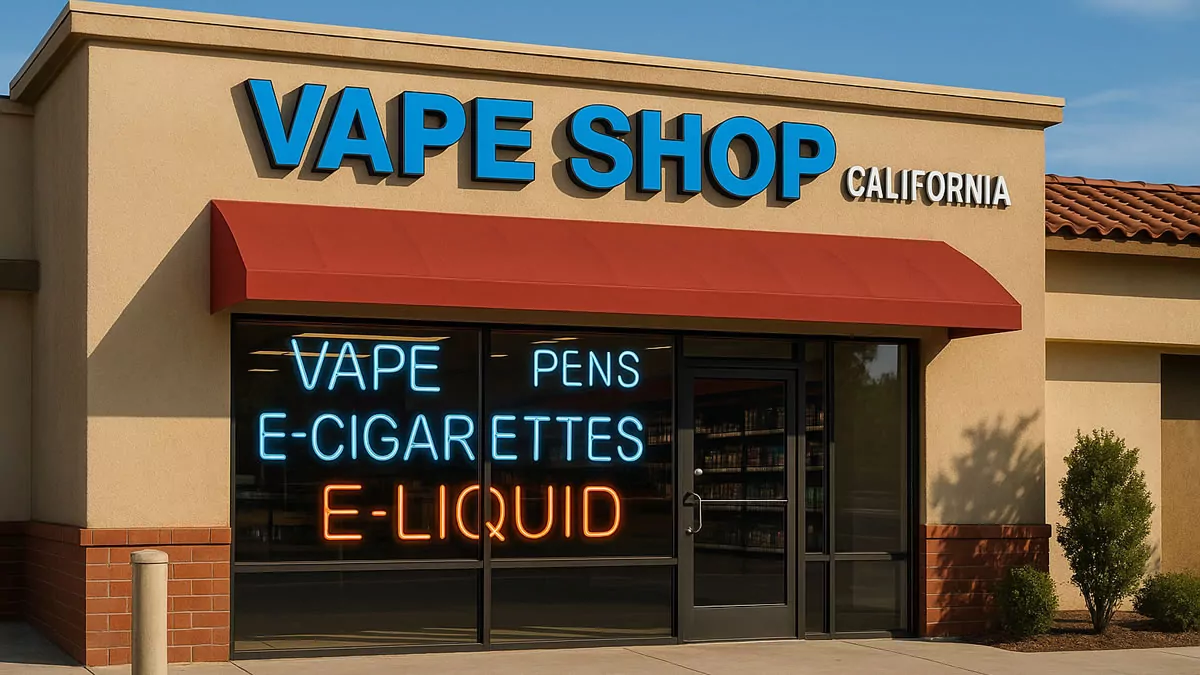
Restrictions on Public Use: Where You Can and Can’t Vape
California law generally treats vaping like traditional smoking when it comes to public use:
- Indoor Prohibitions: Vaping is banned in almost all enclosed public places and workplaces, including:
- Restaurants and bars (indoor areas)
- Offices and private worksites
- Public buildings (state or local government-owned/leased)
- Hotel lobbies and common areas
- Near Entrances: Vaping is generally prohibited within 20-25 feet of main entrances, exits, and operable windows of these public buildings.
- School Properties: Vaping is strictly prohibited on all K-12 school campuses, buildings, grounds, and at school-sponsored events. This applies to students, staff, and visitors. The ban often extends to within 25 feet of playgrounds.
- Outdoor Spaces: Many state parks and state beaches have vaping bans. Local ordinances often extend these bans to other outdoor areas like local parks, beaches, outdoor dining areas, and public transit systems.
- Vehicles: Vaping is illegal in a motor vehicle when a minor (person under 18) is present.
- Residential Dwellings: Landlords have the right to prohibit smoking and vaping of tobacco products on their residential properties, including within individual units and common areas.
Advertising and Marketing Regulations
To protect youth, California enforces strict advertising and marketing rules:
- No Youth Targeting: Advertising vaping products near schools (often within 500-1000 feet) is prohibited. The use of imagery, characters, or language that appeals to minors (e.g., cartoons, youth-oriented celebrities) is banned. Digital advertising targeting individuals under 21 is also prohibited.
- Packaging and Labeling: Vaping products must have:
- Child-resistant packaging.
- Clear labeling of nicotine content.
- Prominent health warnings about nicotine addiction and potential risks.
- No misleading health claims.
Taxation on Vaping Products
California imposes significant taxes on vaping products containing nicotine:
- Excise Tax: Smoke-free tobacco products, including nicotine-containing vapor products, are taxed at a high rate, currently 63.49% of the wholesale cost.
- Additional Retail Tax: An extra tax of 12.5% of the retail price is levied on these products.
Revenue from these taxes is often allocated to public health initiatives, including smoking cessation programs and healthcare services.
The Proposed Disposable Vape Ban
California continues to explore further restrictions. Notably, legislation has been proposed to ban the sale or distribution of all new or refurbished disposable e-cigarette devices, potentially starting from January 1, 2026. The primary motivation cited is to reduce plastic waste and the environmental impact of these single-use products. Violations would incur fines starting at $500 for a first offense.
Enforcement and Penalties
The California Department of Tax and Fee Administration (CDTFA), alongside local law enforcement agencies, is responsible for enforcing these vaping laws. Penalties for violations can be severe:
- Retailers: Face hefty fines (ranging from $2,000 to $50,000 for flavor ban violations, for example), suspension or revocation of their tobacco retail license, and seizure of illicit products.
- Individuals: Fines for violating public use bans can start around $25 for a first offense.
Ecigator is one of the well-known vape brands spun off from FM Technology Co., Ltd, it’s an ISO-certified disposable vape manufacturer for OEMs, ODMs, and OBM since 2010. The founder team comes from top firms with more than 10 years of experience in the vaping industry and has devoted thousands of hours to providing users with a better and better experience.
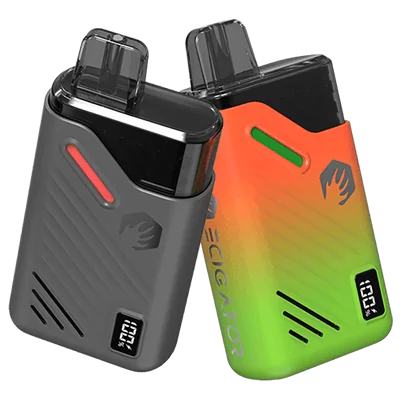
18K Disposable Pod Kit
Disposable Pod Kit – 18ml changeable pod with 650mAh rechargeable battery.
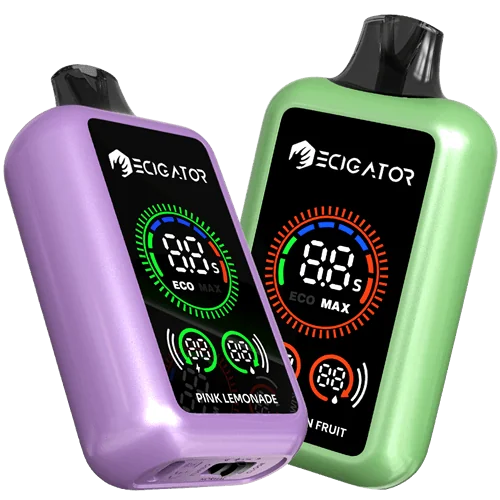
20K with Large Screen
20000 Puffs Disposable Vape with large screen. Normal and Boost working modes.
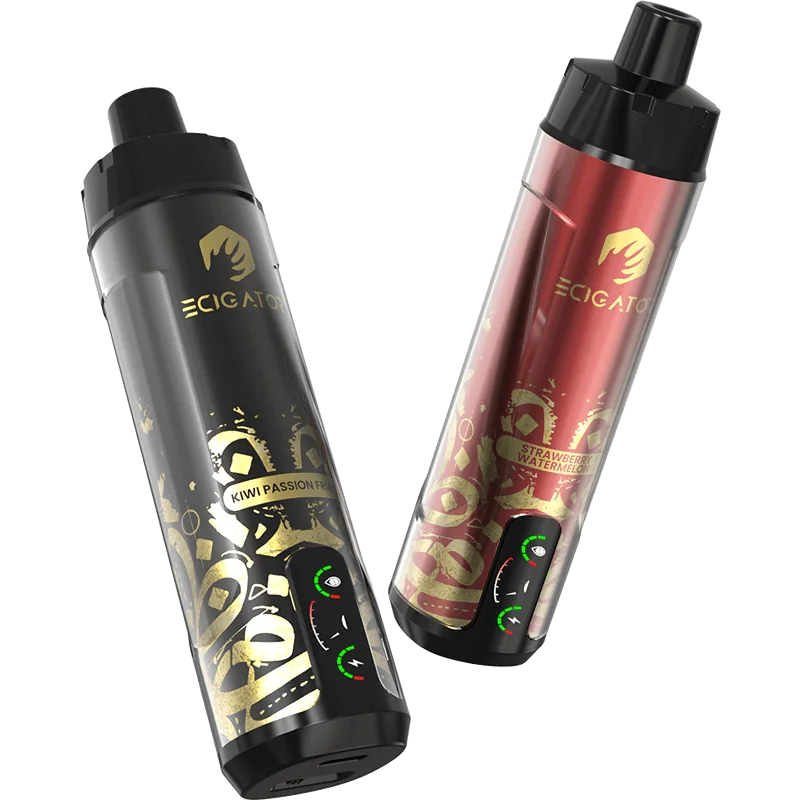
20K DTL Disposable
20K Puffs DTL(Directly to Lung) disposable vape with airflow control and screen.
Summary of Key Vaping Regulations in California
The following table summarizes the primary vaping regulations in California:
| Regulation Area | Key Provision | Effective Date(s) | Affected Products |
|---|---|---|---|
| Age to Purchase | Minimum age 21 (18 for active-duty military). Strict ID verification required. | Ongoing | All tobacco products, including e-cigarettes, e-liquids, components. |
| Retail Flavor Ban | Prohibition on retail sale of most flavored tobacco products (including menthol cigarettes & most flavored e-cigarettes). | Dec 21, 2022 (SB 793/Prop 31) | Flavored e-liquids, pods, cartridges, menthol cigarettes, flavored small cigars. Exempts hookah, premium cigars, pipe tobacco. |
| Comprehensive Flavor Ban (incl. Online) | Prohibition on all sales (retail and online/delivery) of flavored tobacco products; covers nicotine analogs; creation of “Unflavored Tobacco List.” | Jan 1, 2025 (AB 3218/SB 1230) | All flavored vaping products, nicotine pouches, products with nicotine analogs or non-menthol coolants that impart flavor. |
| Public Vaping | Prohibited in enclosed workplaces, restaurants, bars, public buildings (and within 20 ft of entrances/exits), state parks/beaches, vehicles with minors. | Ongoing | E-cigarettes, vape pens, and similar devices. |
| Taxation | High excise taxes on nicotine-containing vapor products. | Ongoing | Vapor products with nicotine (taxed at 63.49% of wholesale cost + 12.5% of the retail price). |
| Disposable Vapes | Proposed ban on the sale of all disposable vaping devices. | Proposed for Jan 1, 2026 | Single-use, non-rechargeable, non-refillable e-cigarettes. |
Conclusion: A Tightly Regulated Landscape
California’s vaping laws are among the strictest in the nation and continue to evolve. The clear trajectory is towards tighter controls, greater restrictions on product availability (especially flavored and disposable items), and robust enforcement. For consumers, retailers, and manufacturers, staying informed about these complex and frequently updated state and local regulations is paramount to ensure compliance and navigate this challenging environment. The Golden State’s approach underscores a strong commitment to public health, particularly the prevention of youth nicotine addiction, even if it means significantly limiting options for adult vapers.
Frequently Asked Questions (FAQs)
-
What is the legal age to buy vape products in California?
In California, you must be at least 21 years old to purchase any tobacco products, including e-cigarettes, vape pens, and e-liquids.
-
Are all flavored vapes illegal in California?
Yes, as of January 1, 2025, the sale (both retail and online) of almost all flavored tobacco products, including flavored e-cigarettes, vape juice, and nicotine pouches, is prohibited. The law targets “characterizing flavors” other than artificial tobacco. An “Unflavored Tobacco List” is maintained by the Attorney General; products not on this list are presumed flavored and illegal.
-
Can I still buy flavored vape juice online and have it shipped to California?
No. Effective January 1, 2025, California law prohibits the online sale and shipment of flavored tobacco products, including flavored e-liquids, to consumers in California.
-
Where am I not allowed to vape in California?
Vaping is prohibited in most indoor public places and workplaces (restaurants, bars, offices), within 20-25 feet of entrances/exits of public buildings, on school grounds, in state parks/beaches, and in vehicles with minors. Local laws can add more restrictions.
-
What are the consequences for retailers selling banned vape products?
Retailers face substantial fines, suspension/revocation of their tobacco retail license, and product seizure for selling banned flavored products or selling to underage individuals.
- Cannabis and Vape Shop Workers Rank Happiest in Nation - July 31, 2025
- Richmond, VA, Restricts New Vape & Tobacco Shop Locations - July 31, 2025
- Study Finds Flavored Vape Bans Cut Vaping But May Slow Smoking Decline - July 31, 2025

